The team is introducing a self-sufficient residential and industrial plot designed to revolutionize urban living while addressing pressing environmental concerns and celebrating Barcelona’s rich food heritage.
In architectural design, structural organization plays a critical role in shaping the form and function of buildings. The adoption of innovative structural systems not only enhances structural efficiency, but also opens up possibilities for creative spatial configurations. In this blog post, we’ll explore a unique structural approach characterized by mesh organization and integrated circulation cores, along with the incorporation of a greenhouse within the building envelope.
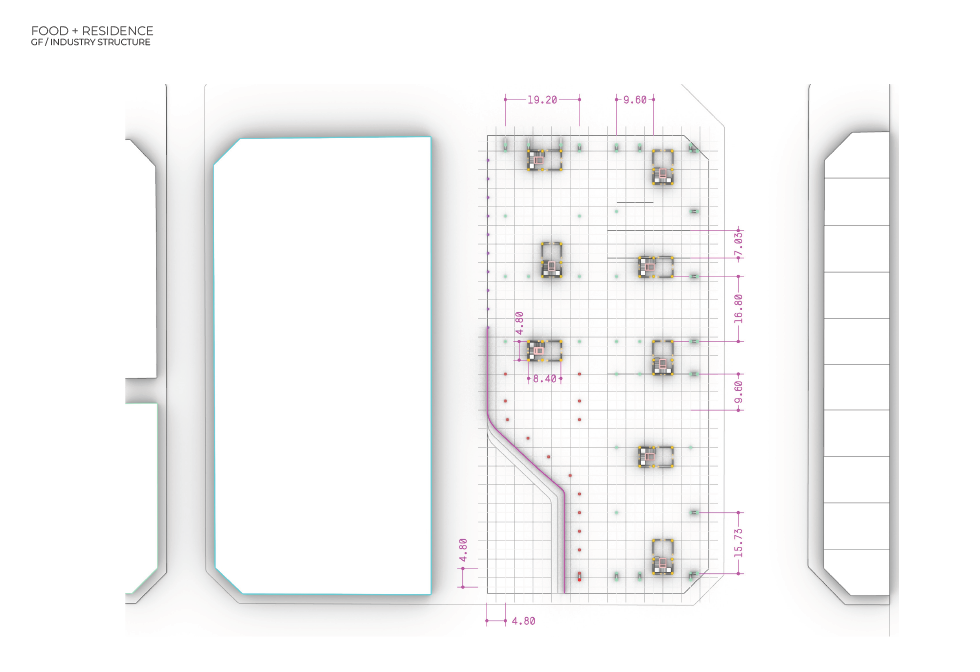
Mesh Organization: The structural framework of the building is meticulously organized through a mesh pattern, with each module measuring 2.40m x 2.40m. This modular approach allows for flexibility in design and construction, facilitating efficient assembly and adaptation to various spatial requirements.
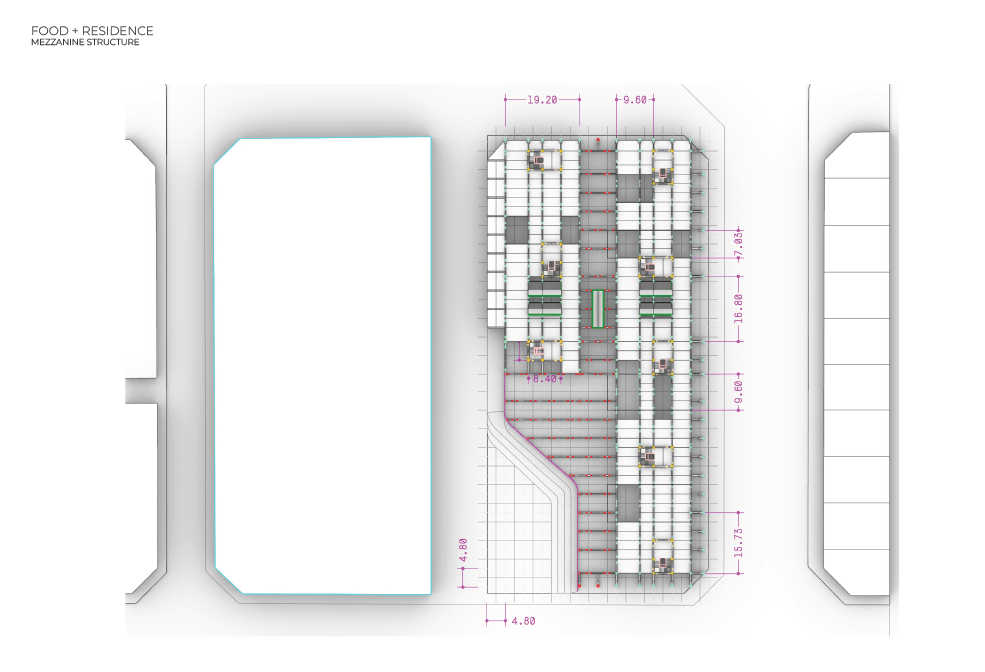
Truss System: The vertical circulation cores also serve as anchors for the truss system, which spans an impressive 16.80m. This system comprises 3m high trusses, organizing the spatial and functional structure of the space with efficiency and elegance.
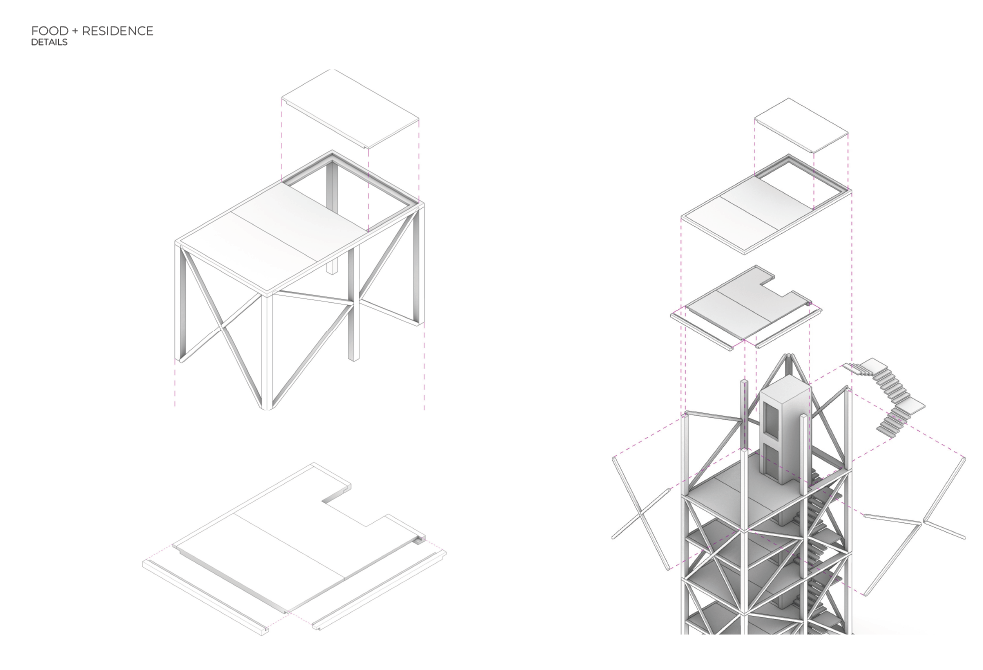
Circulation Cores: The circulation cores serve as pivotal elements in the structural system, providing both vertical circulation and structural support. Constructed with pre-sized columns and beams measuring 50cm x 50cm, reinforced with steel and tensioners for stability, these cores ensure robustness and safety throughout the building.
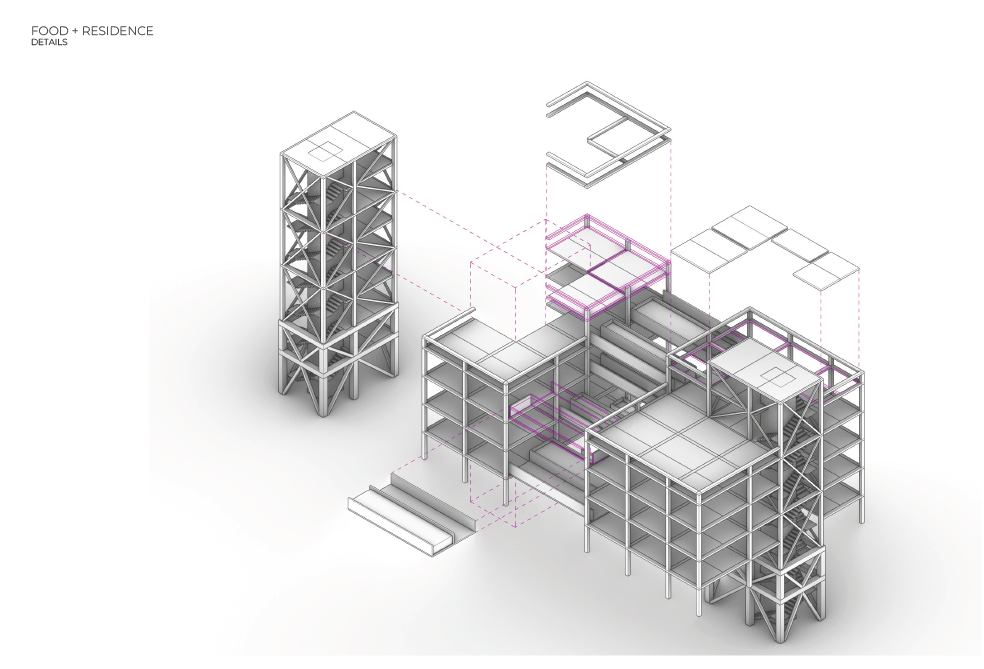
Residence Structure: The residential units, spanning four stories, feature a lightweight structure consisting of columns measuring 30x30cm and beams measuring 18x40cm. This minimalist yet robust framework provides the necessary support for the residential spaces while optimizing material usage and construction efficiency.
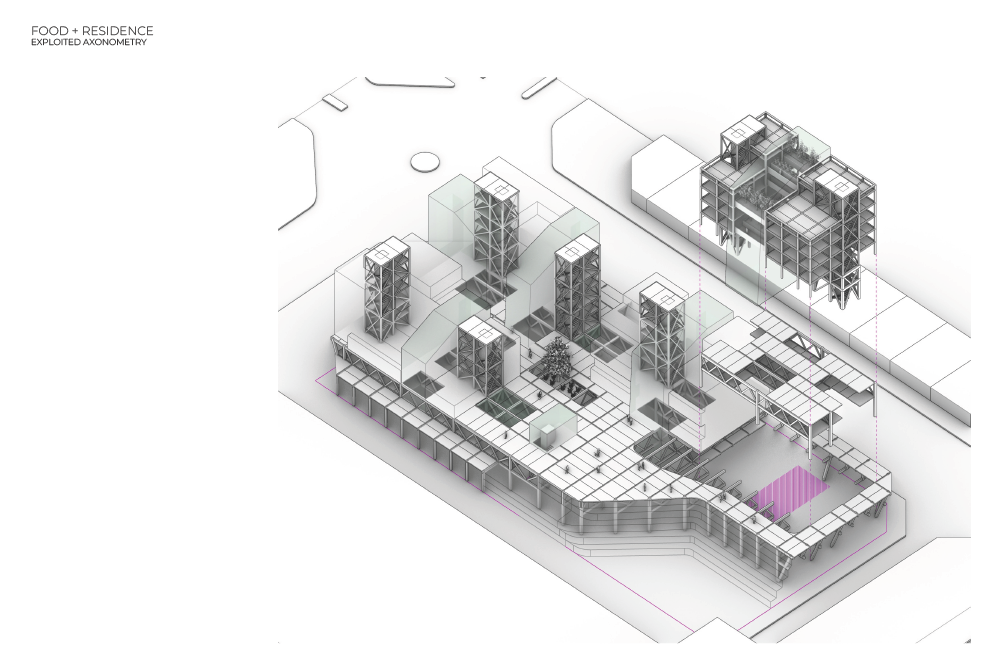
Integration of Greenhouse: An innovative aspect of the design is the integration of a greenhouse within the building envelope. The façade of the greenhouse features prestressed trusses with steel cables and wooden framing, allowing for the installation of a polycarbonate structure with aluminum. This integration not only enhances the aesthetic appeal of the building but also promotes sustainability by providing a space for plant cultivation and passive solar heating. The Resilient Envelopes blog post thoroughly explains the structural and material aspects of greenhouse development.
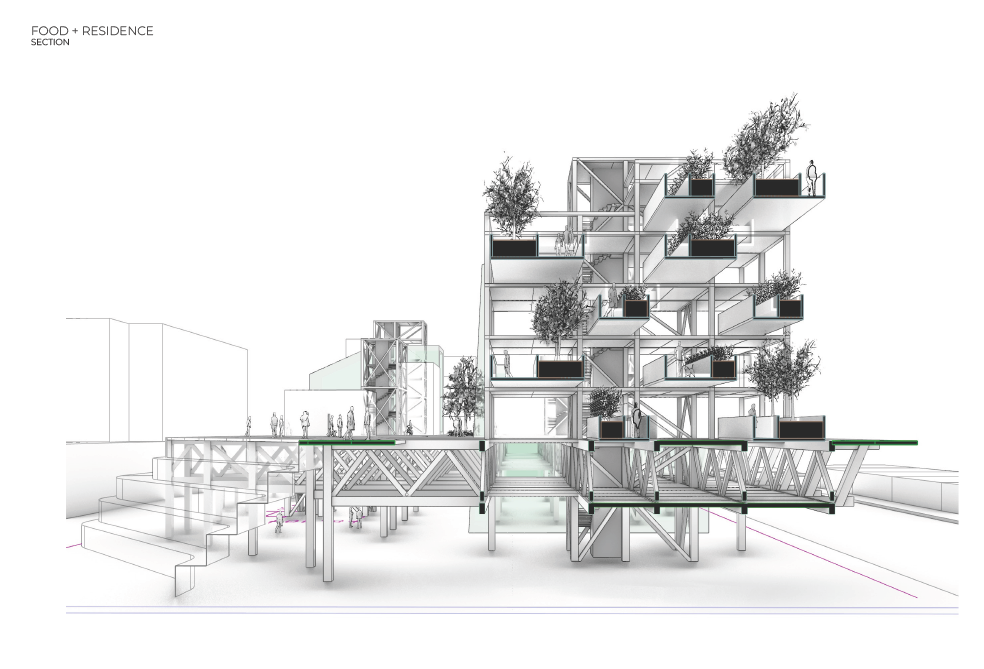
The structural design described above exemplifies a harmonious fusion of innovation, efficiency, and sustainability. By leveraging mesh organization, integrated circulation cores, and a truss system, architects can create spaces that are both structurally sound and aesthetically compelling. Furthermore, the integration of a greenhouse within the building envelope underscores the potential for multifunctional design solutions that prioritize environmental stewardship.
As architects continue to push the boundaries of structural design, embracing novel approaches and integrating sustainability principles into their practice, we can look forward to a built environment that not only meets the needs of today but also nurtures the well-being of future generations.

